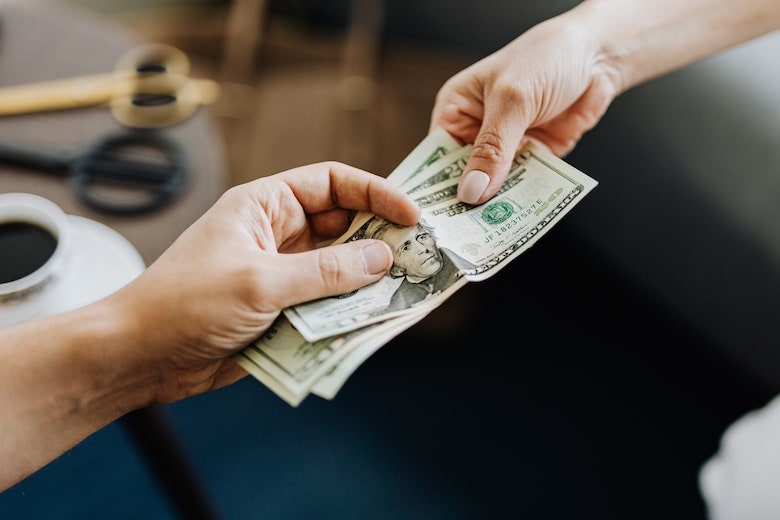The introduction is the opening section of the essay that sets the stage for the discussion of the topic. The question, in this case, is “Why are the smallest loans the most expensive to pay off or repay?” The introduction’s purpose is to provide a brief overview of the topic and its significance.
To begin, the introduction will define what small loans are, which can vary depending on the context. Small loans can refer to loans with low dollar amounts, such as payday loans or credit card cash advances, or loans with short repayment periods, such as overdraft fees.
It is important to understand the cost of small loans because they can have a significant impact on individuals’ financial health. Small loans may be the only option for some people in need of quick cash, but they often come with high-interest rates, fees, and short repayment periods that can make them difficult to pay off. These factors can create a cycle of debt that can be hard to break out of and can also negatively impact credit scores and cause psychological stress.
In short, the introduction will provide a brief overview of the topic, define what small loans are, and explain why it is important to understand their cost. By doing so, the introduction will set the foundation for the essay and prepare the reader for the discussion that follows.

Table of Contents
Factors that make small loans expensive
One of the main reasons why small loans can be expensive is because of the high-interest rates and fees that lenders charge. Interest rates on small loans are often higher than those on larger loans because the lender must make a profit on the loan, regardless of the amount borrowed. In addition to the interest rates, lenders may also charge fees, such as origination fees, application fees, or prepayment penalties, which can add to the total cost of the loan.
Small loans often come with short repayment periods, which means borrowers have less time to pay back the loan in full. This can make the monthly payments higher, and if the borrower is unable to pay the loan back within the specified period, they may be hit with late fees and additional interest charges.
Lenders incur administrative costs when they process small loans, such as verifying the borrower’s identity and creditworthiness and underwriting the loan. These costs can be significant, particularly for small loans, and may be passed on to the borrower in the form of higher interest rates and fees.
Lenders must assess the risk of lending to a borrower, regardless of the loan amount. Small loans may be riskier for lenders because they are typically unsecured, meaning there is no collateral to back up the loan. To mitigate this risk, lenders may charge higher interest rates and fees, or they may limit the amount they lend to certain borrowers.
In summary, small loans can be expensive for a variety of reasons, including high-interest rates and fees, short repayment periods, administrative costs, and risk assessment and management. These factors can make it challenging for borrowers to pay off the loan and may contribute to a cycle of debt.
Examples of small loans and their costs
Payday loans are short-term loans, usually repayable on the borrower’s following payday. People who require quick cash to pay unexpected expenses frequently use them. However, payday loans can be very expensive due to high-interest rates and fees. According to the Consumer Financial Protection Bureau (CFPB), the average payday loan has an annual percentage rate (APR) of around 400%. This means that if a borrower takes out a $500 payday loan and repays it in two weeks, they may end up owing over $600.
Credit card cash advances allow borrowers to withdraw cash from their credit card at an ATM or bank. While this may seem like a convenient way to get cash, it can be very expensive. Credit card companies typically charge high fees for cash advances, which can range from 2-5% of the amount borrowed. In addition to the fees, cash advances also come with high-interest rates, often around 25% or higher. This means that if a borrower takes out a $500 cash advance, they may end up owing over $600 in just a few months.
Overdraft fees are charged by banks when a customer’s account balance falls below zero, and they continue to make transactions. While overdraft fees are technically not loans, they can be just as expensive. According to the CFPB, the average overdraft fee is around $35 per transaction, and customers can be charged multiple fees in a single day. This means that if a customer has a balance of -$50 and makes three transactions in one day, they could be charged up to $105 in overdraft fees.
Pawnshop loans are a type of secured loan where the borrower pledges an item of value, such as jewelry or electronics, as collateral for the loan. The loan amount is typically a percentage of the item’s appraised value, and the borrower has a set amount of time to repay the loan and reclaim the item. However, pawnshop loans can also be expensive, with interest rates that can range from 10-25% per month. If the borrower is unable to repay the loan, the pawnshop may keep the item and sell it to recoup its costs.
In summary, small loans such as payday loans, credit card cash advances, overdraft fees, and pawnshop loans can be expensive due to high-interest rates, fees, and short repayment periods. It is important for borrowers to carefully consider the costs before taking out a loan and to explore alternative options, such as borrowing from family or friends or seeking financial assistance from non-profit organizations.
Consequences of taking out small loans
One of the most significant consequences of taking out small loans is the potential for a cycle of debt. If a borrower is unable to pay off the loan on time, they may be hit with additional fees and interest charges, which can make it even more challenging to pay off the loan. This can lead to a cycle of borrowing and repayment that can be difficult to break out of, particularly for those with limited financial resources. For example, a $100 loan instant app may seem like a quick fix for a financial emergency, but if the borrower is unable to pay it back on time, they may end up paying much more in fees and interest over time.
Taking out small loans can also have a negative impact on a borrower’s credit score, particularly if they are unable to repay the loan on time. Late or missed payments can be reported to credit bureaus, which can lower a borrower’s credit score and make it harder for them to access credit in the future. This can be especially problematic for those who rely on credit to cover their day-to-day expenses or unexpected emergencies.
Finally, taking out small loans can also cause psychological stress and anxiety. The pressure of paying off the loan, combined with the high-interest rates and fees, can take a toll on a borrower’s mental health. This can be particularly true for those who are already struggling financially and may feel trapped in a cycle of debt.
In conclusion, while small loans such as a $100 loan instant app may seem like a quick and easy solution to financial problems, they can have significant consequences. Borrowers should carefully consider the costs and potential consequences of taking out a loan before doing so, and explore alternative options for addressing their financial needs.
Alternatives to small loans
One alternative to taking out a small loan is to negotiate a payment plan with creditors. This may be an option for those who are struggling to make their payments but do not want to take on additional debt. Creditors may be willing to work with borrowers to create a more manageable payment plan that fits their budget.
There are many non-profit organizations that offer financial assistance to those in need. These organizations may provide help with basic needs such as food, housing, and utilities, as well as financial counseling and assistance with debt management. Some non-profits may also offer small grants or loans to help individuals in financial distress.
Another alternative to small loans is to borrow from family or friends. While this may not be an option for everyone, it can be a good way to get the financial help needed without incurring additional fees or interest charges. However, it’s important to approach these types of loans with care and to make sure both parties are clear on the terms and repayment plan.
Finally, building an emergency fund can help individuals avoid the need for small loans altogether. Setting aside a small amount of money each month can help to cover unexpected expenses, such as car repairs or medical bills, without resorting to borrowing. This can be challenging for those on a tight budget, but even small amounts can add up over time and provide a financial safety net.
In conclusion, while small loans may seem like an easy solution to financial problems, there are many alternatives that can be more manageable and less costly. By exploring alternative options and building a financial safety net, individuals can avoid the cycle of debt and improve their overall financial well-being.
FAQs
Why is it better to pay off the smallest debts first?
The snowball approach involves prioritizing minor debts first, intending to pay them off as early as possible. Once you’ve paid off one small debt, you can continue on to the next-smallest sum until they’re all gone. This approach may save you less money in the long term than others.
Is it better to pay off the smallest debt or the highest interest?
If you have a couple of debts to pay off then you should pay the smallest debt with a higher interest rate.
Is it better to have no debt or a little debt?
Yes, Because With no debt, you can concentrate on saving more money, spending it, and simply having more peace of mind about your finances.
Conclusion
In conclusion, while small loans may seem like a quick and easy solution to financial problems, they can come with high costs and significant consequences. The combination of high-interest rates and fees, short repayment periods, and other administrative costs can make small loans among the most expensive types of debt to pay off.
Taking out small loans can also lead to a cycle of debt, damage to credit scores, and psychological stress and anxiety. It’s important for borrowers to carefully consider the potential costs and consequences of taking out a loan before doing so, and to explore alternative options for addressing their financial needs.
Fortunately, there are many alternatives to small loans, including negotiating payment plans with creditors, seeking financial assistance from non-profit organizations, borrowing from family or friends, and building an emergency fund. By exploring these alternatives and taking steps to improve their overall financial well-being, individuals can avoid the pitfalls of small loans and make progress toward their long-term financial goals.
Ultimately, the key to avoiding the high costs and negative consequences of small loans is to be proactive and strategic when it comes to managing one’s finances. By developing good financial habits, such as budgeting, saving, and investing wisely, individuals can build a strong financial foundation that can help them weather unexpected financial challenges and achieve their long-term financial objectives.











Leave a Reply